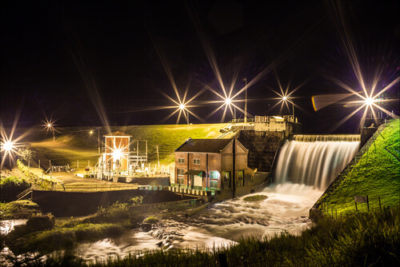

The Ministry of Power is seeking approval from the cabinet for a policy change which will see hydel projects being categorized as a part of the country’s renewable energy mix. At present, only small hydro projects i.e. under 25 MW in generational capacity are recognized as a type of renewable energy.
As a part of the policy change, large hydro projects will be considered as renewable energy sources and will help boost India’s chances of achieving its ambitious target of 175 GW of renewable capacity by 2022. Besides, as a renewable energy source will also help hydropower get a priority over thermal electricity while being dispatched to the consumers. The hydel sector would also get an added boost since states will be able to fulfill their mandatory renewable purchase obligations by buying electricity from these power plants. The move, while not wholly unexpected, is also a possible signal to the increasing difficulty the government has been facing in ramming through on the targets through solar and wind mostly.
The power ministry note to the cabinet also seeks the approval for the introduction of a separate ‘hydropower purchase obligation’ category. To reduce hydro-power tariffs, the ministry also wants the cabinet to modify existing norms, which will see host states not receive free power from hydropower plants until five years from commissioning. As per existing provisions, developers have to contribute 12% free power to state governments. The ministry also asked for “in-principle’ approval to allow infrastructure costs that are not directly related to power generation (such as the construction of roads, bridges, and flood moderation infrastructure) to be excluded from the calculation of hydroelectricity tariffs. These were all issues we had heard, and reported on fro the session on Mini Hydro at the ReInvest Summit, back in October. Though we doubt that the industry expected the ministry to react with this move for what is effectively, large hydro.
It has also recommended that operation and maintenance cost should be estimated at 1% for tariff calculation, which currently is at approximately 3%, while calculating tariffs, raising the cost of hydropower.
[related_post]
The key advantage of Hydel power over other sources of energy is the possibility of a faster starting and stopping period. The faster on/off functionality helps in balancing out the transmission grid. A crucial advantage with the recent surge in solar and wind power generation, which without a stable storage setup, can be uncertain and intermittent. But, while the average price of power for discoms at present is ₹3.5/unit, the cost for hydropower can be as much as ₹6.4/unit. Despite India being resource-rich, hydropower is yet to contribute a commensurate share to its energy mix, accounting for only 13% of its installed generation capacity of 346 GW.
The power ministry has also recommended providing certain ‘special dispensation’ for hydro-based power plants. Proposing a 4% interest subvention scheme for 22 hydro projects with 10,436 MW capacity, likely to be commissioned in the next five years. The ministry is confident that the low-cost credit could be sourced from the national clean energy fund, where “there are sufficient funds available to provide interest subvention,” the ministry said. From the ₹86,440 crore collected from the coal-cess (₹400/tonne) till FY18, only ₹29,645 crore has been transferred to the clean energy fund.
Read more: Small Hydro And The Fear of Being Forgotten
Mumbai headquartered bioenergy engineering & tech major Organic Recycling Systems Ltd (ORSL) has launched a…
India is undergoing a significant influx of urban migration and a reclassification of rural areas,…
India’s quest toward green hydrogen economy received a significant boost with a strategic MoU between…
A new report by S&P Global has revealed that India’s growing biofuels industry is emerging…
In a significant breakthrough for India’s renewable energy and dairy sectors, dairy major Amul has…
Renewable energy conglomerate Anaergia Inc, through its subsidiary, Anaergia S.r.l., entered into a contract with…